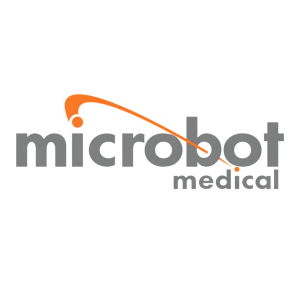Microbot Medical Completes GLP Animal Study for the LIBERTY® Robotic System
Microbot Medical Inc. (Nasdaq: MBOT) has completed a significant GLP animal study for its LIBERTY® Robotic System, the first disposable robotic system aimed at endovascular procedures. Conducted at a top MedTech research lab, the study achieved a successful navigation rate of 92% for the robotic system, while demonstrating no evidence of acute vascular injury. Physicians graded the LIBERTY system highly for usability, indicating a quick setup and easy learning curve. However, the LIBERTY Robotic System is still investigational and has not yet received FDA clearance for use.
- Achieved a 92% success rate in robotic navigation during GLP study.
- No acute vascular injuries observed post-procedure.
- High physician usability scores for ease of navigation and learning curve.
- LIBERTY Robotic System is still investigational and not FDA-cleared.
- 3.2% of targets failed due to non-device related issues.
Insights
Analyzing...
HINGHAM, Mass., Oct. 13, 2022 (GLOBE NEWSWIRE) -- Microbot Medical Inc. (Nasdaq: MBOT) announced a significant development milestone as it completed the GLP animal study for the LIBERTY® Robotic System, the first disposable robotic system being developed for endovascular procedures. The study was performed by a team of seasoned Key Opinion Leaders (KOLs) in the endovascular space at a world-class MedTech research laboratory with FDA-required levels of planning, controlling, monitoring, and reporting (GLP standards), using porcine model.
During the GLP animal study, the physicians conducted pre-determined 63 navigations to the targeted sites using the investigational LIBERTY Robotic System and performed an equal number of procedures manually. The performance endpoint of the LIBERTY Robotic System after robotic navigation was successfully completed for 58 out of the 63 targets (
In addition to the objective measurements, the performance and usability of the LIBERTY Robotic System were subjectively graded by each of the physicians, with their assessments accounting for features such as ease of navigation to the target, learning curve, and system stability. For the target sites reached, the physicians graded the LIBERTY Robotic system at the highest grade.
“It was a very satisfying experience,” commented Dr. Sebastian Flacke, MD PhD, Professor of Radiology Tufts Medical School, Chief Interventional Radiology, Vice Chair for Research, Lahey Hospital and Medical Center. “It gives you a very precise feeling on what you’re doing with a lot of control.”
"Set-up time is quick,” added Dr. Dmitry J. Rabkin, MD, Ph.D., FSIR, Assistant Chief, Division of Angiography and Interventional Radiology, Department of Radiology, Brigham and Women’s Hospital, after his own experience with LIBERTY during the GLP study. “The learning curve appears to be easy. The all-around experience was very good, delicate and precise.”
“We are very proud and excited of how LIBERTY performed during the GLP animal study,” commented Dr. Eyal Morag, Chief Medical Officer of Microbot. “It was exciting to watch my very esteemed colleagues quickly adapt to performing the procedures robotically, and their success in hitting the targets is a testament to just how accessible LIBERTY is.”
The LIBERTY Robotic System is investigational and has not been cleared by the U.S. Food and Drug Administration for any use, and accordingly it is not commercially available in the United States or in any other market. The Company plans to further support this study with additional pre-clinical and clinical data.
About Microbot Medical Inc.
Microbot Medical Inc. (NASDAQ: MBOT) is a pre-clinical medical device company that specializes in transformational micro-robotic technologies, focused primarily on both natural and artificial lumens within the human body. Microbot’s current proprietary technological platforms provide the foundation for the development of a Multi Generation Pipeline Portfolio (MGPP).
Microbot Medical was founded in 2010 by Harel Gadot, Prof. Moshe Shoham, and Yossi Bornstein with the goals of improving clinical outcomes for patients and increasing accessibility through the use of micro-robotic technologies. Further information about Microbot Medical is available at http://www.microbotmedical.com.
Safe Harbor
Statements as to future financial and/or operating results, future growth in research, technology, clinical development, and potential opportunities for Microbot Medical Inc. and its subsidiaries, along with other statements about the future expectations, beliefs, goals, plans, or prospects expressed by management, constitute forward-looking statements within the meaning of the Private Securities Litigation Reform Act of 1995 and the Federal securities laws. Any statements that are not historical fact (including, but not limited to statements that contain words such as “will,” “believes,” “plans,” “anticipates,” “expects” and “estimates”) should also be considered to be forward-looking statements. Forward-looking statements involve risks and uncertainties, including, without limitation, market conditions, risks inherent in the development and/or commercialization of potential products, including LIBERTY, the outcome of its studies to evaluate LIBERTY and other existing and future technologies, uncertainty in the results of pre-clinical studies and clinical trials or regulatory pathways and regulatory approvals, uncertainty resulting from the COVID-19 pandemic, need and ability to obtain future capital, and maintenance of intellectual property rights. Additional information on risks facing Microbot Medical can be found under the heading “Risk Factors” in Microbot Medical’s periodic reports filed with the Securities and Exchange Commission (SEC), which are available on the SEC’s web site at www.sec.gov. Microbot Medical disclaims any intent or obligation to update these forward-looking statements, except as required by law.
Investor Contact:
Michael Polyviou
EVC Group
mpolyviou@evcgroup.com
732-933-2754








